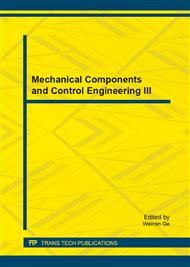[1]
Li Xiaohui, Xiao Rongbo, Liao Yuantao, Wei Zongcai. Analysis on the Issues of Development and Planning Strategics for Guangfo City. Urban Studies. Vol. 17, No. 12, 2010, 77-83.
Google Scholar
[2]
Wang De, Song Yu, Liao Yuantao, Wei Zongcai. A Review on the Implementation of City Integration Strategy. Urban Planning Forum. No. 4, 2009, 74-78.
Google Scholar
[3]
Huang Xinhao. A Research on Theory and Practice of Cities' Synchronization. Jilin University, June, (2013).
Google Scholar
[4]
Chen Xiaohong, Li Chenggu. Study on urbanization and urban- rural integration in China. Urban Studies, 2004, 11( 2) : 41- 44.
Google Scholar
[5]
Yuan Qi- feng. The challenge and opportunities of Guangzhou-Foshan under the background of integration. Urban Insight, 2010( z1) : 173-177.
Google Scholar
[6]
Han Hong. An empirical study on financial support and development of city economic integration: a case study of Zhengbianluo as an example of city economic integration. Urban Studies, 2009, 16( 4) : 97- 100.
Google Scholar
[7]
Xing Ming. Thoughts over integration of Shenyang- Fushun metropolitan area. City Planning Review, 2007, 31(10) : 52- 56.
Google Scholar
[8]
Zhu Tongdan. The path choices made by general cities of metropolitan economic circle to be integrated. Urban Problems, 2007, 148 ( 11) : 15- 19.
Google Scholar
[9]
Peng Zhenwei, Qu Niu. Study on integrative development and regional coordinated planning strategies in China. Modern Urban Research, 2011, 6: 20- 24.
Google Scholar
[10]
Zhao Yingkui, Zhang Jianjun, Wang Lidan, et al. Integration of Shenyang and Fushun in regional collaboration: a case study of Shenyang- Fushun integration plan . City Planning Review, 2010, 34( 3) : 85- 88.
Google Scholar
[11]
Vaddepalli S. An analysis of characteristics of long and short commuters in the United States. ( 2011-12-10) [2011-12-30]. http: usf. catalog. fcla. edu / sf. jsp? st = SF001469423&ix = nu.
Google Scholar
[12]
J.M. Dargay, S. Clark. The determinants of long distance travel in Great Britain. Transportation Research Part A , 46 (2012), 576–587.
DOI: 10.1016/j.tra.2011.11.016
Google Scholar
[13]
Peng Hui, Fu Huimin. Travel characteristics in transportation corridor of Beijing –Zhengzhou. Journal of Chang'an University( Natural Science Edition), Vol. 25 No. 6, Nov. (2005).
Google Scholar
[14]
Planning Department of Hong Kong, Northbound Southbound. 2011, www. pland. gov. hk/pland_tc/p_study/comp_s/nbsb2011/index. html.
Google Scholar
[15]
Hou Xue, Liu Su, Zhang Wenxin, Hu Zhiding. Characteristics of Commuting Behaviors Between Beijing and Tianjin Influenced by High Speed Train. Economic Geography, Vol. 31, No. 9 Sep., (2011).
Google Scholar
[16]
Li Jun, Zhu Shunying, Li Anxun, et al. Trip characteristics of intercity and in city of Changzhutan urban agglomeration. Transportation Science & Technology, 2006, 219( 6) : 69- 72.
Google Scholar
[17]
Xie Lijian, Zhou Suhong. The characteristics of intercity commuting in Guangzhou under the context of regional integration. Urban Insight, 2010( 4) : 85- 93.
Google Scholar
[18]
Zhao Miaoxi, Wang Shifu, Zhang Xiaoxing. Investigation into Functional Linkage Between Guangzhou and Foshan Represented by Subway Passengers. Journal of South China University of Technology (Natural Science Edition), Vol. 40 No. 6, June (2012).
Google Scholar
[19]
Wang Shifu, Zhao Miaoxi. Intercity Trips and Activities: The Case of Guangzhou and Foshan. Urban Planning Forum . No. 3, (2012).
Google Scholar
[20]
Li Chuanzhi. The Report of 2 Years Old Guang-Fo Metro. Guangzhou Daily, November 1, (2012).
Google Scholar


